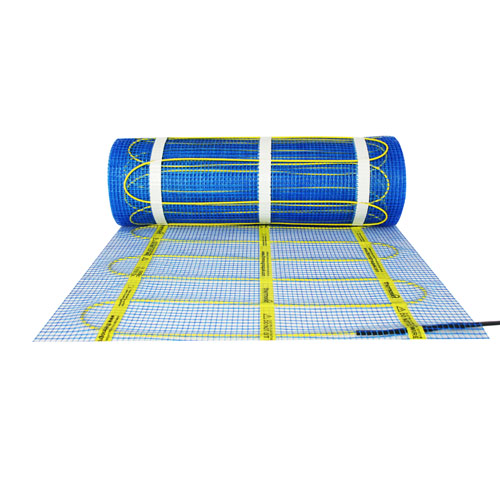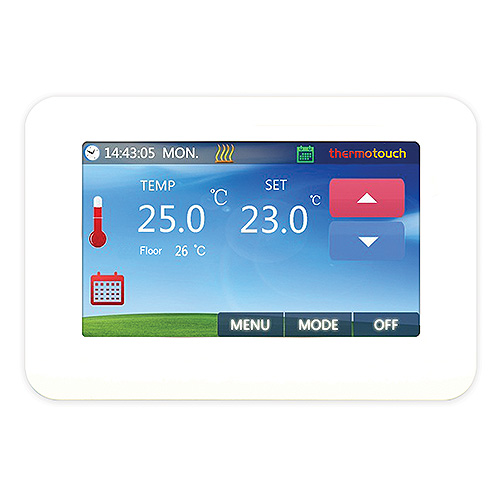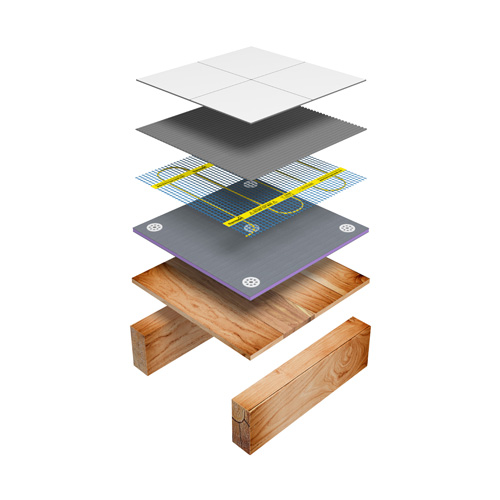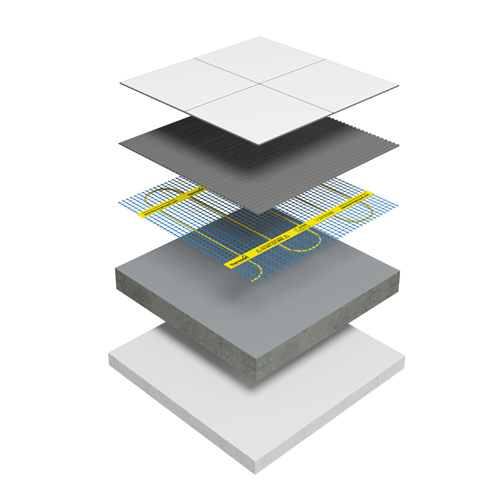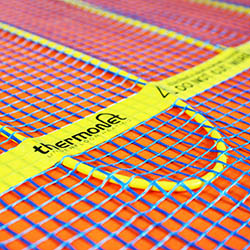A Guide to Wet and Electric Underfloor Heating
Underfloor heating isn’t a new idea, but it’s becoming an increasingly popular one. And there are now many different systems to choose from, whether for a one-off project, like a bathroom or wetroom, or an entire new-build house.
So, what exactly is underfloor heating and what’s the appeal?
In simple terms, underfloor heating uses the floor as a radiator, warming the room from the ground up with slow-rising heat, giving a lovely even temperature.
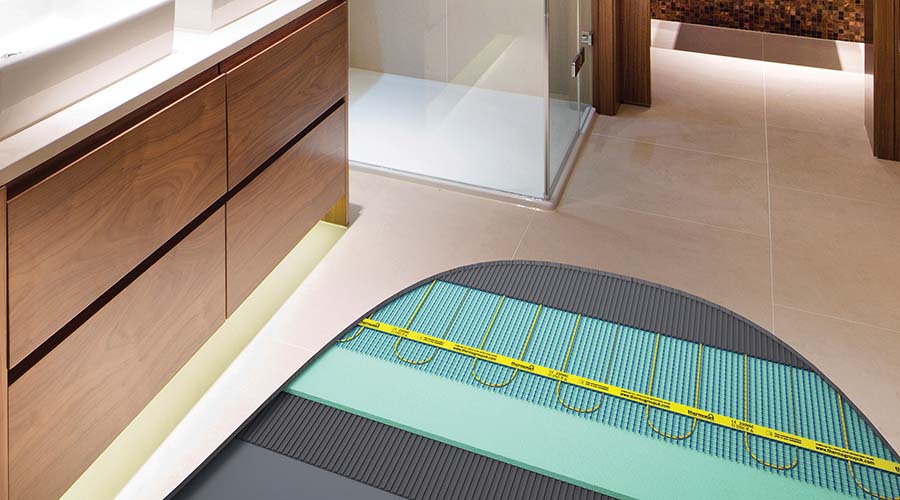
The advantages of underfloor heating
- No radiators – This means more space and furniture options.
- Even heat – No ‘hot spots’ or cold areas, and rising heat makes a less stuffy environment.
- Longer warmth – Heat is released from the thermal slab slowly, so areas stay warmer for longer.
- Cost saving – As a lower temperature is needed to heat a room, it can cost less money.
- Moisture control – Can help dry floors in wet areas, controlling moisture and mould.
- Help allergies – It’s believed the even heat reduces humidity, helping prevent dust mites and improving the surroundings for allergy sufferers.
- Surface finishes – Warm floors mean porcelain and ceramic tiles don’t feel cold.
The disadvantages of underfloor heating
- Reaction times – Some systems can be quite slow. However, electric systems like the Thermonet range can reach working temperature in just five to ten minutes. Timings really depend on the kind of system and the flooring. For example, ultra-thin porcelain tiles will heat far quicker than wood flooring or a thick natural stone tile.
- Compatibility – Not all types of electric underfloor heating can be used with wetroom systems, but Thermonet’s electric underfloor heating mats are designed for this.
- Cost and fitting – Some wet underfloor heating systems are better for new builds or extensions, as they can be costly and tricky to fit into existing buildings.
Wet underfloor heating
Hot water is channelled through a grid of plastic water pipes underneath the floor, encased in a heat-conducting screed. The hot water heats the floor tile, effectively turning it into a radiator.
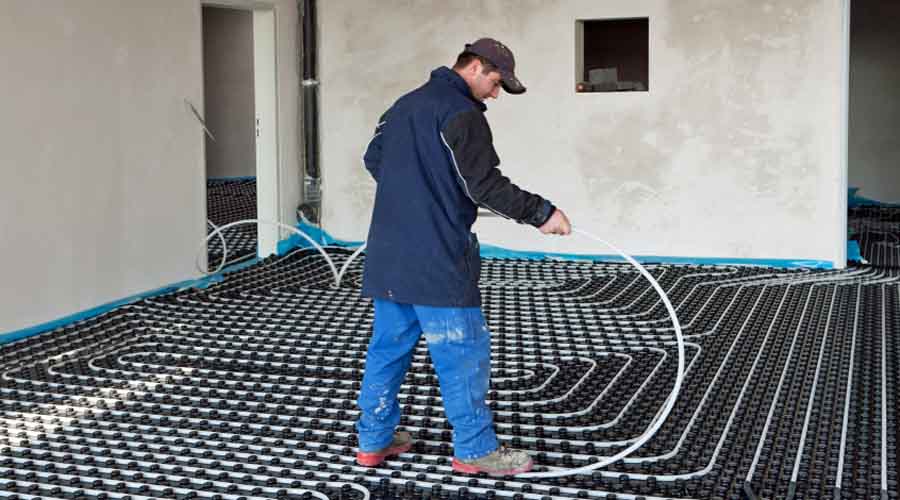
As the water used to heat the thermal slab is cooler, it costs less to heat and can be up to 30% more efficient than a normal radiator. However, it can take as long as two hours to get from cold to working temperature.
Installing underfloor heating suitable for a wetroom is a big job, so it’s really best suited to new builds or extensions, and should always be done under expert guidance, with a system approved for use in wet areas.
Electric underfloor heating
Using electricity to radiate heat through a grid of wires, electric underfloor heating is usually laid over an insulation board, over the top of an existing sub floor. Although there are some designed for use in concrete screeds.
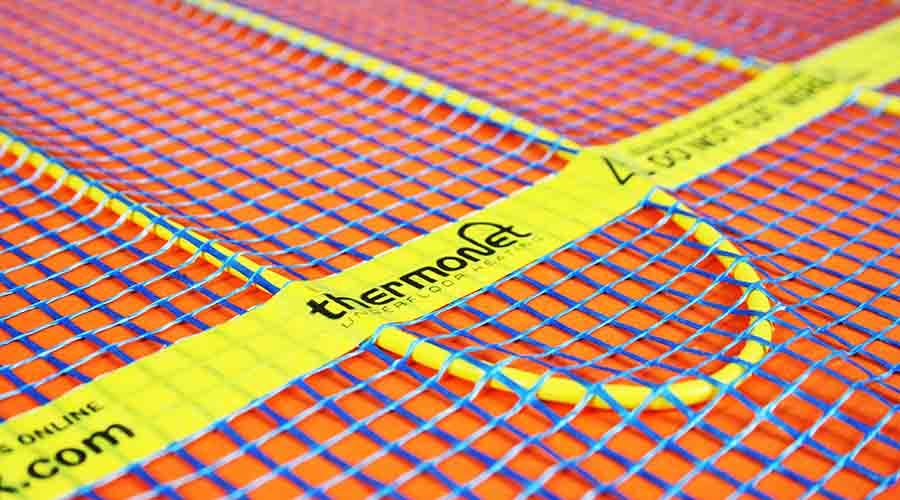
Electric underfloor heating is a lot cheaper to buy and install than wet underfloor systems, and warm-up times can be as little as five to ten minutes if it’s laid under ultra-thin porcelain tiles.
We offer a comprehensive range of Thermonet electric underfloor heating mats, thermostats, insulation board and everything you need to install your electric underfloor heating. You should always have your system tested by a Part P-qualified electrician, if you require assistance or would like some advice before purchasing an electric floor heating system please visit our Dorset tile and bathroom showroom where one of our knowledgeable staff will be please to answer your questions
Underfloor heating may be used with a wide variety of floor coverings
Natural stone, ceramic and porcelain tiles
Both wet and electric underfloor heating can be used with tiled and stone floors, keeping them warm and moisture free. Warm-up time will depend on the floor’s thickness – with ultra-thin porcelain tiles being the quickest, as well as helping to minimise the increase in the floor height.

Vinyl floors
Underfloor heating should only be installed with a vinyl floor that’s specifically designed to work with it. The underfloor heating will probably need to be covered with a thin layer of screed or levelling compound, to create a suitable surface.
Wood and carpet
Again, underfloor heating can be used with both natural and engineered wooden flooring, as long as the floor has been designed specifically for that use. You may find expansion gaps are needed to allow for movement in the floor. Alternativley consider installing wood effect porcelain tiles which will often radiate heat more efficiently than wood and carpet
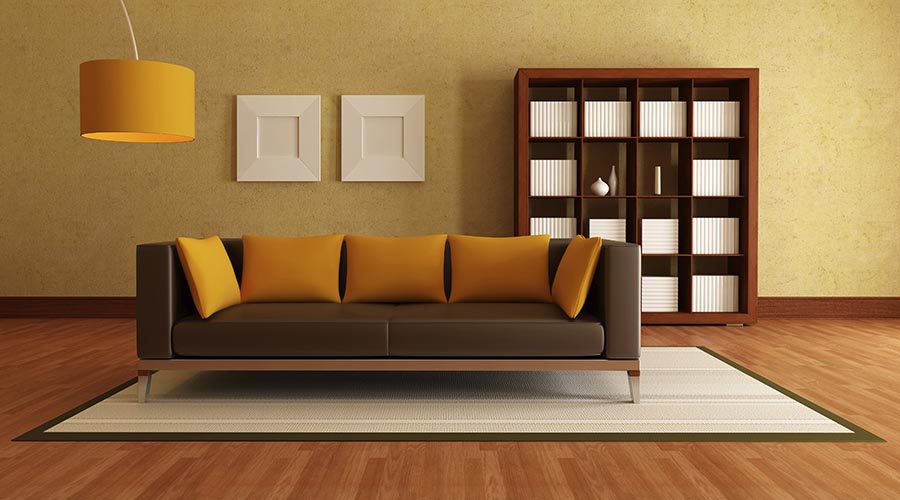
For underfloor heating with carpet, you need to make sure the carpet and underlay has a combined thermal resistance below 2.5 togs, to allow the heat to radiate effectively.
It’s always best to contact the retailer or manufacturer of your floor, whether tiles, wood, vinyl or carpet, for advice when choosing an underfloor heating system, to make sure it’s compatible.
Cost of of underfloor heating
With correct insulation and a floor covering that allows heat to be distributed quickly and efficiently, underfloor heating can save you a lot of money. How much underfloor heating will cost to run is difficult to say is hard to say as it is very much dependant on the underfloor heating system you choose, the type of building, the floor covering and how well insulated the floor is. All of these factor can have a significant effect on the thermal efficiency and running costs of the heating system.
You can find more information on the installation and running costs of underfloor heating on Thermonet’s website.
Things to consider when choosing electric underfloor heating
The right insulation is one of the most important things to think about, to make sure underfloor heating works as efficiently as possible. If the sub floor or slab isn’t sufficiently insulated, it will take longer to heat up and use more energy to maintain the temperature.
Underfloor heating systems work with a thermostat, which is often connected to a time clock, so you’ll need to make sure this is in an easily accessible place. Wet underfloor heating systems are often split by floor levels with flow control manifolds in each area, so, again, the positioning of these is important.
It’s imperative to make sure all floor coverings, screeds, tile adhesives and tile grouts are suitable for use with underfloor heating.
From choosing your underfloor heating system, to selecting your floor covering and installing, it’s always best to get professional advice. For help with any aspect of electric underfloor heating, please contact us, or visit our tile and bathroom showroom in Wareham, Dorset, and experience the warmth of Thermonet’s electric underfloor heating mats for yourself.





